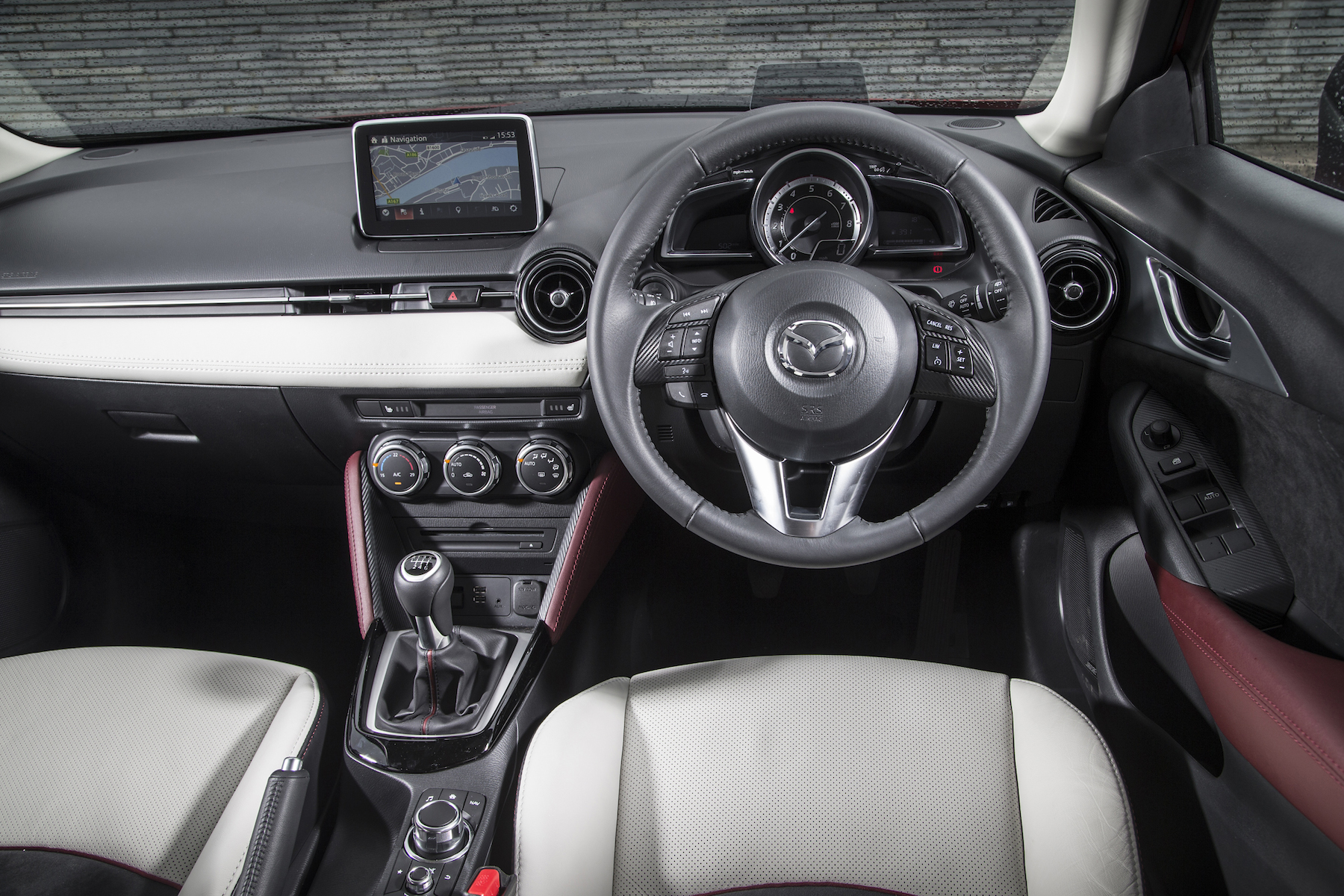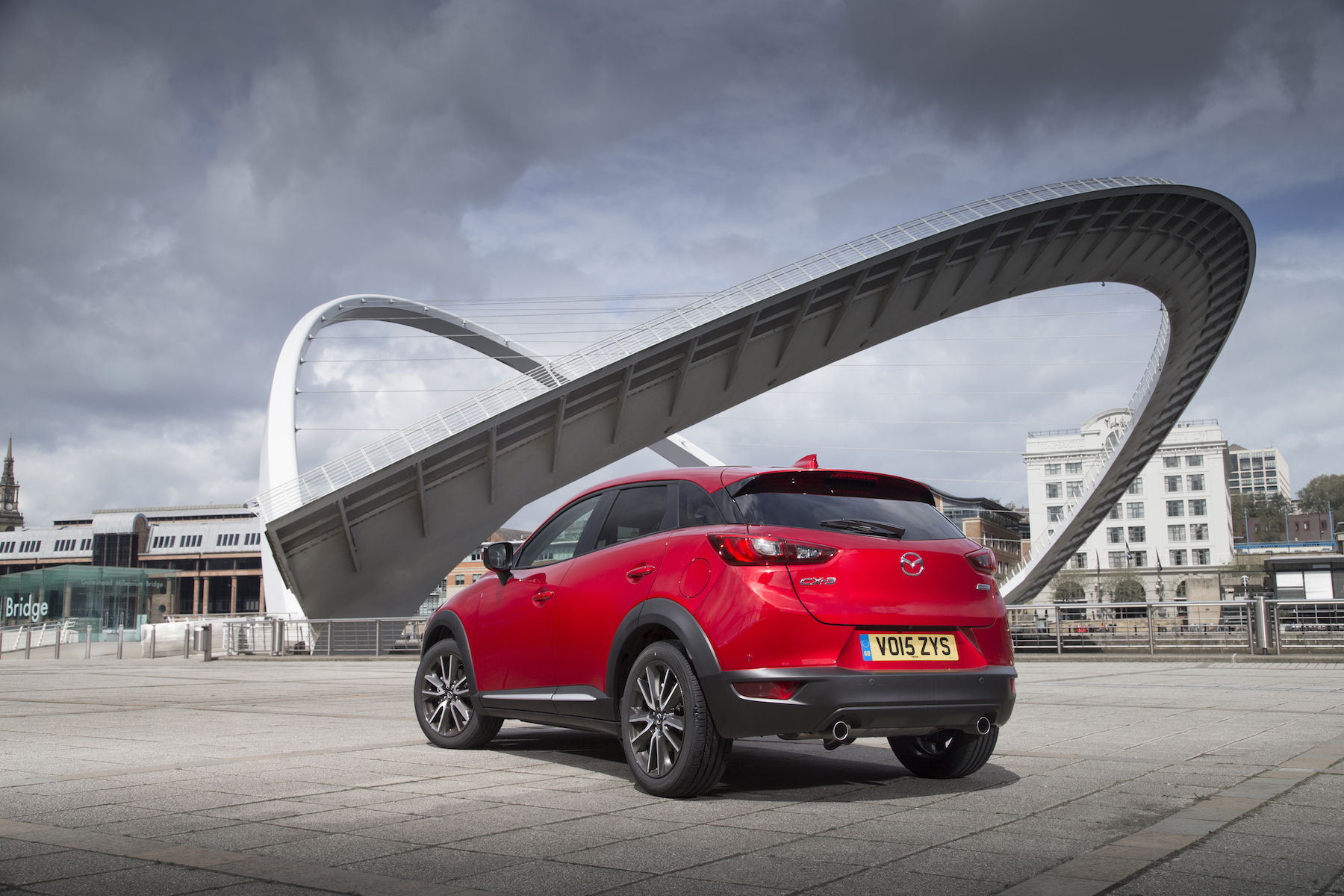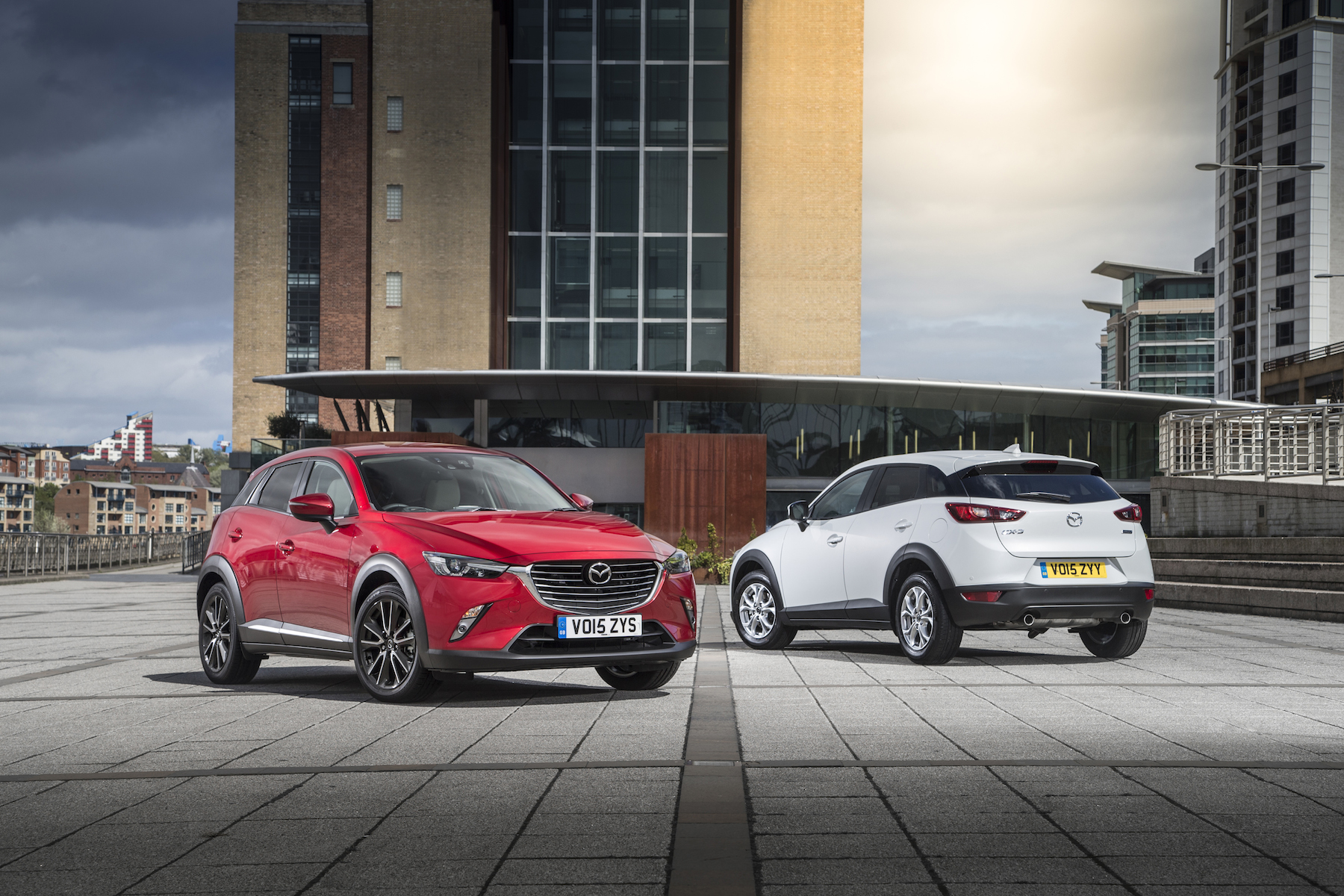Mazda CX-3: Overview
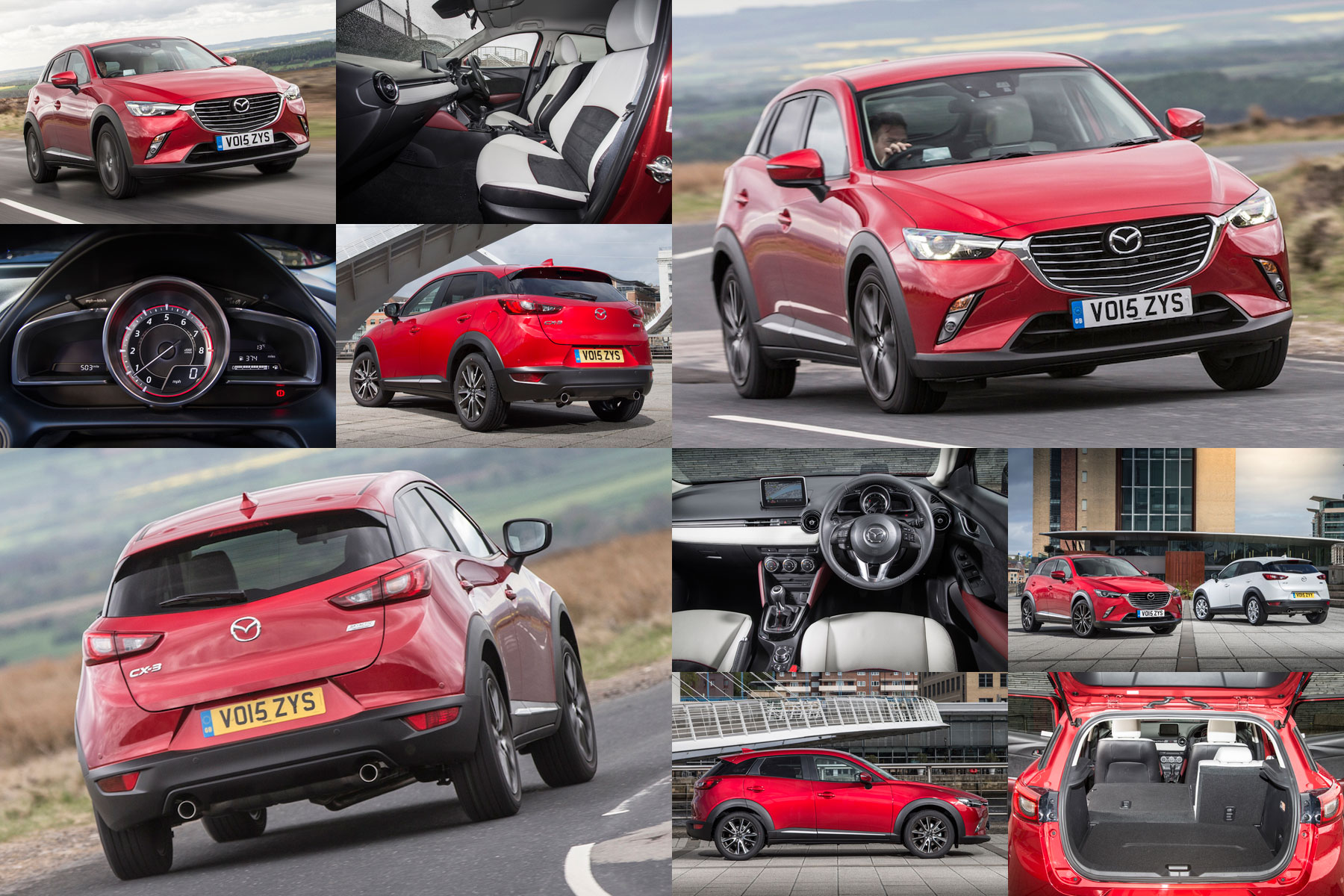
If there is one type of car that seems to define current motoring trends, it has to be the crossover. Take a normal family hatchback, add some SUV-inspired height, and you arrive at this increasingly popular segment. It’s no surprise, then, that Mazda is gunning for the Nissan Juke with its all-new CX-3.
It adopts Mazda’s current ‘KODO’ design language, so you see the common theme of swooping sides and a five-pointed front grille throughout the company’s range of cars. It makes the CX-3 an attractive proposition in a sector where image counts for a lot.
Engine choices for the CX-3 are fairly simple. In the petrol corner is a 2.0-litre four-cylinder unit, offered in either 118hp or 148hp flavours. The more powerful version is reserved exclusively for the all-wheel-drive CX-3, with the 118hp engine powering front wheels only. The four-wheel-drive model only comes with a six-speed manual gearbox, while the front-driver also has the option of a six-speed automatic.
There’s only one diesel option, a 104hp turbocharged 1.5-litre four-cylinder engine. This can be had with either front- or all-wheel drive, and a choice of manual or automatic gearboxes.
Mazda is keen to position the CX-3 as a premium option, with prices reflecting this. The cheapest 2WD manual petrol SE starts at £17,595, with prices rising all the way to the range-topping AWD Sport Nav diesel automatic at £24,695.
Mazda CX-3: On the road
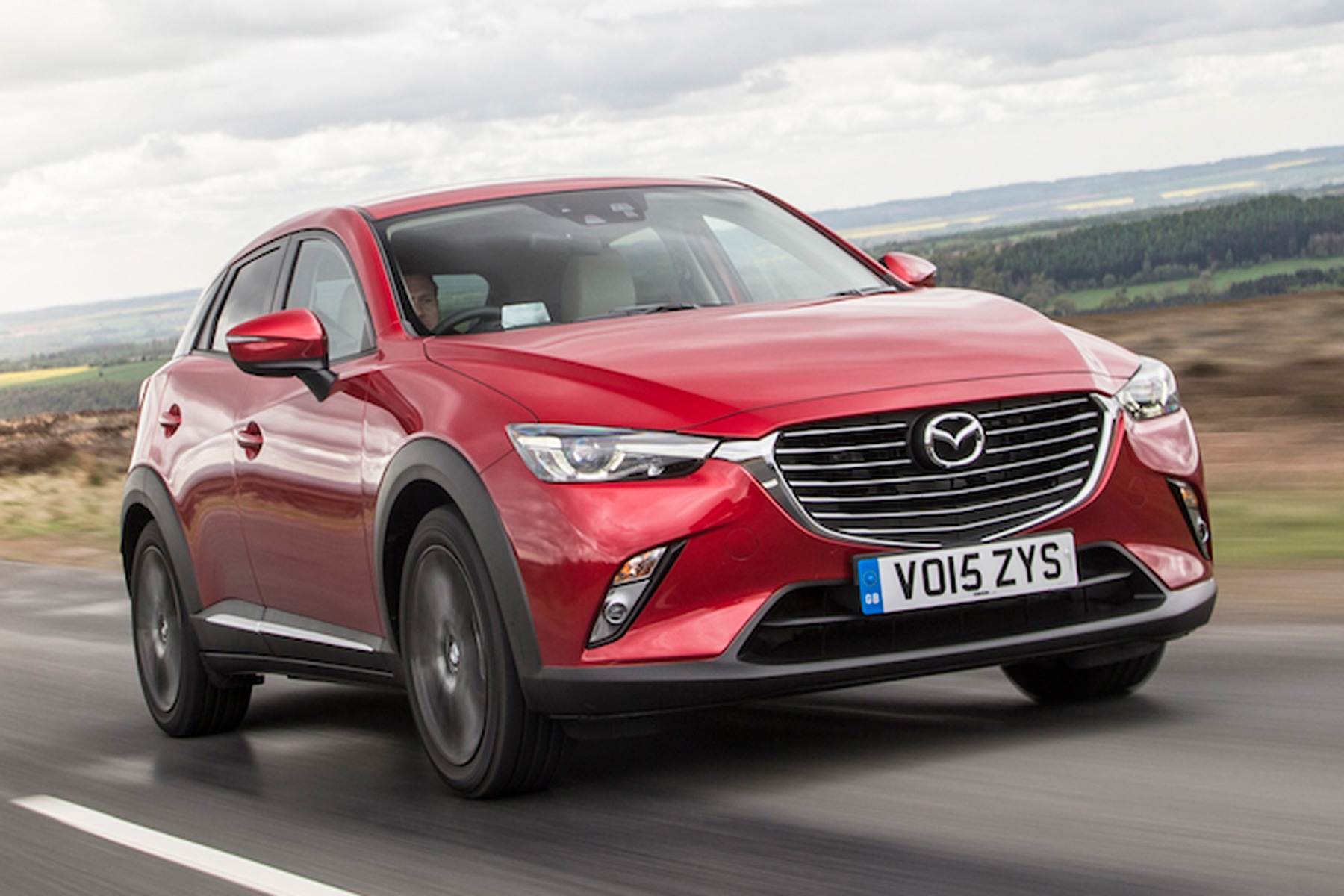
While manufacturers increasingly aim to market their products as sporty, the end result isn’t always achieved. Mazda, on the other hand, has nailed it with the CX-3, creating what can certainly be described as a sporty crossover.
We tried the 118hp petrol engine first, fitted with a six-speed manual gearbox that you could be convinced was from the MX-5 roadster. The gearshift is tight, precise, and features a short throw that makes changing up or down a pleasure.
With a low kerb weight of 1,230kg, the 2.0-litre petrol is able to propel the CX-3 along at a decent pace – a 0-62mph time of 9.0 seconds almost borders on warm-hatch territory. Peak torque is low down at just 2,800rpm, meaning the petrol CX-3 is an easy car to hustle along without feeling flustered.
Less appealing is the 1.5-litre diesel that, while benefiting from the same great manual gearbox, doesn’t quite fit the CX-3’s sporting intent quite so well. Under acceleration you are reminded of the diesel beneath the bonnet, and there is a degree of lag before the turbocharger responds.
Whichever engine you choose, the relative lack of body-roll from what is quite a tall vehicle is impressive. In keeping with the sports image, the CX-3 maintains a surprisingly upright attitude through twisty corners. Bends can be tackled with far more enthusiasm than expected, with the three-spoke steering wheel giving decent levels of feedback.
We found the petrol Sport Nav spec car with 18-inch wheels produced the best overall body control, in comparison to the diesel SE-L equipped with 16-inch alloys. The smaller wheeled car was more prone to bouncing over bumps, and also lost the crisper initial steering turn-in, too.
It’d be wrong to say the CX-3 is as enjoyable to drive as the iconic MX-5, but it successfully delivers on the promise of being sufficiently sporty to add driving pleasure to your journey.
Mazda CX-3: On the inside
Starting at £17,595, the CX-3 is pricier than both the Nissan Juke and Renault Captur, with Mazda unashamedly pitching it as an upmarket product.
Carbon-fibre trim covers parts of the steering wheel and doors, while neatly stitched leather makes an appearance on the dashboard, arm rests and centre console. Combined with chrome detailing and eyeball air-vents, it all adds up to produce a cabin that can genuinely claim to feel more premium against the CX-3’s rivals.
Further helping justify the premium price is a high level of standard specification. All cars feature air conditioning, DAB radio, cruise control, power-folding door mirrors, and a 7in touchscreen multimedia system. With Bluetooth connectivity, two USB ports, a single-CD player and internet app integration, the CX-3 comes with a lot of equipment that would be expensive options on some competitors.
Rear parking sensors, heated front seats, auto lights and wipers, privacy glass and lane departure warning join the party at SE-L spec, whilst the top Sport Nav adds LED headlights, a seven-speaker Bose stereo system, keyless entry and a useful head-up display. Logically, Sport Nav trim also includes standard satellite navigation with three years of free map upgrades.
Front interior space is more than ample, with enough adjustment in seats and steering wheel for drivers of any shape to get comfortable. Being supermini sized means the rear seats are better suited to children, rather than adults. Also, while a coupé-style roofline may help the CX-3 look cool, it does eat into rear headroom.
Boot space of 350 litres in SE and SE-L trim is identical to that of the MINI Countryman, although Sport Nav trim lowers this to 287 litres due to a subwoofer being mounted in the cargo space. Standard 60:40 folding rear seats offer an increase of space to 1,260 litres (1,197 for the Sport Nav car), with SE and SE-L models also gaining a height-adjustable load floor.
Mazda CX-3: Running Costs
In a world where everything is now downsized, finding a naturally aspirated petrol engine in a small car is a rarity. In fact, Mazda expects the 2.0-litre petrol engine to account for 60% of all CX-3 sales. Its ‘Skyactiv’ philosophy of reducing weight where possible is intended to allow a bigger engine with no fuel economy penalty.
Officially, the 118hp petrol achieves fuel consumption of 47.9mpg, with CO2 emissions of 137g/km. That matches the MINI Countryman 1.6 petrol, and places the CX-3 into the £130-a-year car tax bracket.
Naturally, the 1.5-litre diesel is the fuel miser on paper, with official economy of 70.6mpg, and C02 emissions of 105g/km – sufficient for £20 a year road tax, and on par with class competitors. However, given the £1,400 premium charged for the diesel engine, it may be best suited to those doing substantial annual mileages.
Residual values after three years and 60,000 miles are predicted to be 39% for the petrol engined car, with the diesel slightly stronger at 41%.
Mazda CX-3: Verdict
Does the CX-3 deliver on the promise of being a sporty and premium small crossover? Yes, and indeed, yes.
In fact it’s far sportier than you would imagine a crossover can be, while staying within the realms of everyday usability. Mazda has channelled the influence of the MX-5 into the CX-3, with sharp steering and a snappy manual gearbox.
Add to that stylish good looks, an upmarket interior and a generous level of standard specification, and the CX-3 begins to make a very strong argument for itself in a competitive market. For many, the only barrier to entry will be the strong starting price, despite the actual value for money delivered.
Specification: Mazda CX-3
Engines: 2.0-litre 4-cylinder petrol and 1.5-litre 4-cylinder diesel
Gearbox: Six-speed manual and six-speed automatic
Prices from: £17,595
Power: 104hp – 148hp
Torque: 150 – 199lb ft
0-62mph: 9.0 – 11.9 seconds
Top speed: 107 – 119mph
Fuel economy: 44.1 – 70.6mpg
CO2 emissions: 105 – 150g/km
ALSO READ
Bentley Continental GT review: 2015 first drive
7 ways the 2015 Honda Civic Type R rewrites the hot hatch rulebook
